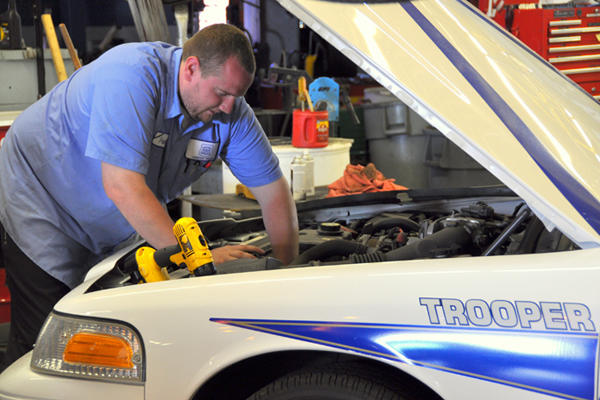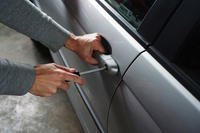In addition to keeping the water and coolant level where it needs to be, you can prevent trouble in your cooling system by keeping an eye out for leaks and replacing old or damaged hoses. Figure 12-3 shows the common trouble spots in the cooling system — the places where you should check for coolantleaks.
The following sections give you a few pointers on what types of coolant leaks to look for.
 |
Look Under Your Vehicle
Look under your vehicle in the morning to see if there's any liquid on the ground below the under-the-hood area. If you see liquid, stick your finger in it and smell it. If it's coolant (green, red, blue, orange, or rust-colored), get a flashlight, look around under the hood at the parts of the car located over the puddle, and feel around for wetness. Be sure to check the hoses leading tothe coolant recovery reservoir and the radiator.
Check the Radiator
Feel the underside of the radiator to see if it's leaking, and look around your radiator for whitish deposits or rust-colored stains. These indicate old leaks that have dried, but they may not be all that old; water tends to evaporate quickly on a hot radiator. Also check the front end of the radiator to see whether the surface is befouled with dirt, leaves, and bugs. If so, wash them off with a brush and a garden hose.
Tip: If your radiator catches a lot of debris, to trap the stuff and keep it from getting stuck between the radiator fins you can attach a piece of nylon window screen over the front surface with twist-ties. You still need to check the screen periodically to be sure it isn't blocked, but it makes the stuff easier to remove.
Check the Pressure Cap
If your vehicle overheats easily, the cheapest remedy is to buy a new safety cap — or ask a mechanic to pressure-test your cap to see whether it's functioning properly. If you need a new one, give the salesperson the make, model, and year of your vehicle and check the pressure limits (psi) on the new cap against your owner's manual to make sure that you're buying the proper cap for the amount of pressure in your cooling system.
Caution: Never let an unfamiliar service station hook you into buying a new cap unless you watch them pressure-test your old one. You may want to have them test the new cap as well. I've been sold a faulty new cap to replace a faulty old one!
Check the Hoses
Tip: Regularly check all the hoses under the hood of your vehicle, whether you've been having trouble or not. For instant panic, there's nothing like having a hose burst while you're driving. If it's a radiator hose, the resulting shower of steam is frightening at best and dangerous at worst. If a vacuum hose goes, the sudden loss of vacuum can stop your vehicle in the midst of traffic. Checking your hoses and replacing the funky ones before they leak can save your nerves and your pocketbook in the long run.
If you find a hose that's soft and squishy, bulging, hard or brittle, cracked, leaking, or marked with a whitish deposit where stuff has leaked and dried, replace it immediately before it breaks.
Car Smarts: If you find a hose that's collapsed when the engine is cold but springs back when you remove the pressure cap, the cap or coolant recovery system —not the hose — is at fault.
If your car starts to overheat and you suspect that the bottom radiator hose is collapsing, park in a safe place away from traffic. Make sure that the car is in Park or Neutral with the parking brake on. Then open the hood without shutting off the engine. Take a look at the bottom hose (be careful not to get your hair or clothing caught in the fan or the accessory belt) and see whether the hose has collapsed. If it has collapsed and you have a spare hose with you, replace it.
Tip: If a radiator hose malfunctions while you're driving, no service facility is going to send a replacement hose out to you, so the vehicle will have to be towed. If you had a hose replaced because it looked like it was getting worn, or if you want to hedge your bets on the road, keep the old hoses or, better yet, new top and bottom radiator hoses in the trunk. Even if you don't want to change a hose yourself, you won't be stuck somewhere waiting for a new hose to be delivered to a service facility if they don't have one in stock.
While you're checking hoses, check the hose clamps that secure all the hoses under the hood, and tighten any that appear loose. Replace those that are rusty, corroded, or impossible to remove without special tools with screw-type hose clamps.
From Auto Repair for Dummies, copyright © 2009 by Wiley Publishing, Inc., Indianapolis, Indiana. Used by arrangement with John Wiley & Sons, Inc.










